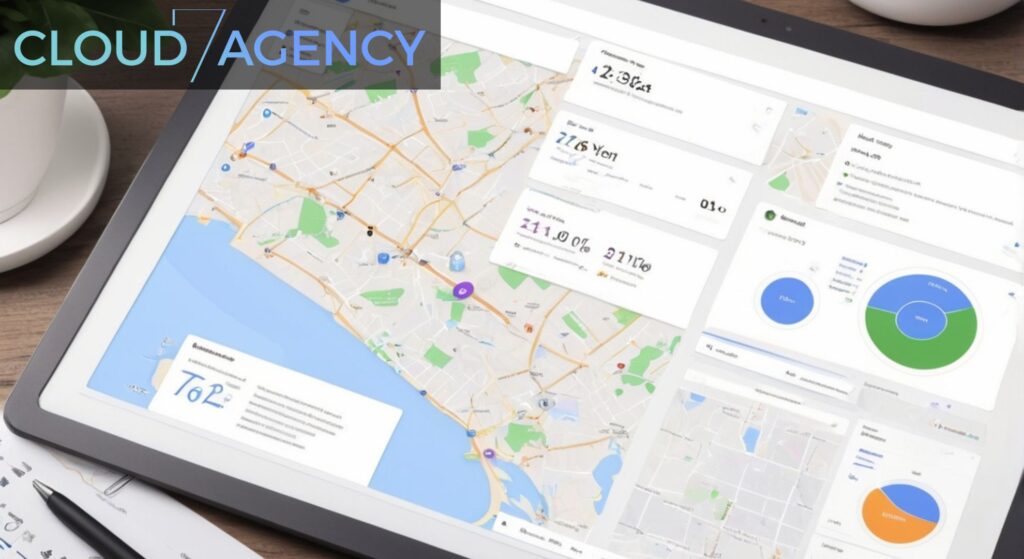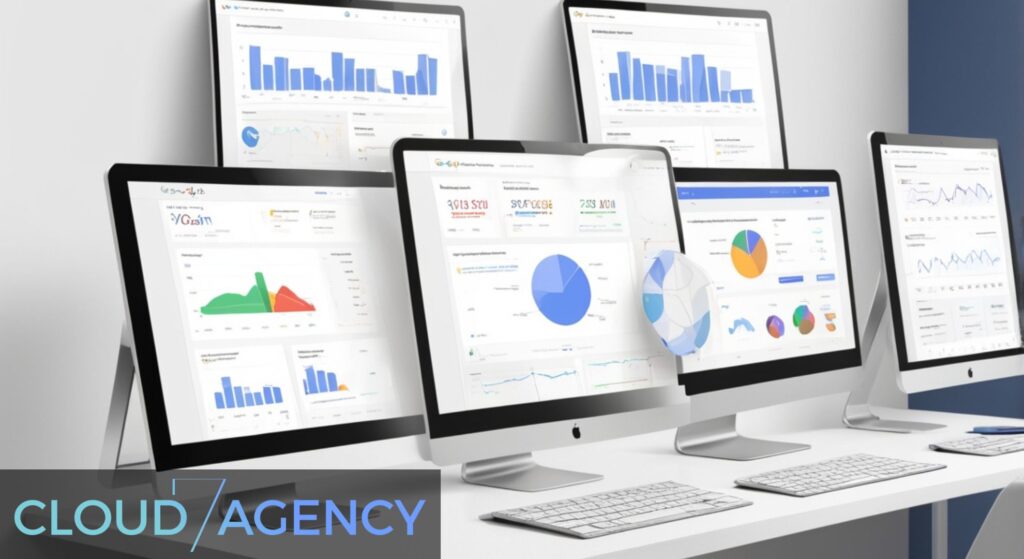Local search engine optimization has become a cornerstone of digital marketing success for businesses targeting customers in specific geographic areas. As mobile searches continue to dominate user behavior, with phrases like “near me” and location-specific queries driving significant traffic, understanding how to check local SEO performance has never been more critical for business owners and digital marketers alike.
The complexity of local SEO extends far beyond traditional search optimization, encompassing multiple ranking factors including Google My Business optimization, local citations, review management, and geographic relevance signals. This multifaceted approach requires sophisticated monitoring and measurement strategies to ensure local SEO strategy efforts are delivering tangible results and driving qualified traffic to businesses.
Checking local SEO performance involves analyzing a diverse array of metrics that paint a comprehensive picture of local search visibility. From tracking keyword rankings in specific geographic locations to monitoring Google My Business insights, local citation accuracy, and conversion rates from local searches, the measurement process requires both technical expertise and strategic insight to identify opportunities for improvement.
The tools and methodologies for measuring local SEO success have evolved significantly, offering businesses unprecedented visibility into their local search performance. Modern monitoring solutions provide real-time data on local rankings, competitor analysis, review sentiment tracking, and attribution modeling that connects local search visibility directly to business outcomes such as phone calls, store visits, and online conversions.
Effective local SEO monitoring requires establishing baseline metrics, setting realistic performance benchmarks, and implementing systematic tracking processes that provide actionable insights. This comprehensive approach to checking local SEO performance enables businesses to make data-driven decisions, optimize their local search strategies, and maintain competitive advantages in increasingly crowded local markets.
Key Takeaways
Multi-Platform Monitoring: Effective local SEO performance checking requires monitoring across multiple platforms including Google My Business, Google Search Console, and third-party local SEO tools to gain comprehensive visibility into local search presence.
Geographic-Specific Tracking: Local SEO metrics must be analyzed from specific geographic locations where target customers are searching, as rankings and visibility can vary significantly across different areas within service territory.
Citation Consistency Auditing: Regular monitoring of local business citations across directories, review sites, and mapping platforms ensures NAP consistency, which directly impacts local search rankings and customer trust.
Review Performance Analysis: Tracking review velocity, sentiment, response rates, and review platform diversity provides insights into reputation management effectiveness and its impact on local search visibility.
Conversion Attribution: Connecting local SEO metrics to actual business outcomes through proper tracking of phone calls, store visits, driving directions requests, and online conversions demonstrates ROI and guides optimization priorities.
Competitor Benchmarking: Monitoring competitor local SEO performance provides context for metrics and reveals opportunities for improvement in local search strategy and execution.
Mobile-First Metrics: Prioritizing mobile search performance metrics reflects the reality that most local searches occur on mobile devices, requiring specific attention to mobile user experience and local search behavior patterns.
Seasonal Performance Tracking: Understanding how local SEO performance fluctuates with seasonal trends, local events, and business cycles enables proactive optimization and realistic expectation setting for stakeholders.
Understanding Local SEO Performance Fundamentals
Local SEO performance measurement begins with understanding the unique characteristics that differentiate local search from traditional organic search optimization. Unlike general SEO metrics that focus primarily on national or global search visibility, local SEO performance encompasses geographic proximity signals, local business authority indicators, and community engagement metrics that directly influence how search engines determine local search rankings.

The foundation of checking local SEO performance lies in recognizing that local search algorithms prioritize relevance, distance, and prominence as primary ranking factors. Relevance measures how well business listings match the searcher’s query intent, distance considers the geographic proximity between the searcher and business location, and prominence evaluates business overall authority and reputation within the local market.
Google My Business performance serves as the cornerstone of local SEO measurement, providing insights into how customers discover and interact with businesses through local search. Key performance indicators include search queries that trigger business listings, customer actions such as website visits, direction requests, and phone calls, as well as photo views and post engagement rates that indicate local search visibility strength.
Local keyword rankings require specialized tracking methodologies that account for geographic variations in search results. Traditional keyword tracking tools often provide limited insight into local search performance because local results can vary dramatically based on the searcher’s precise location, device type, and search history. Effective local SEO monitoring requires tools that can simulate searches from specific geographic coordinates within target market areas.
Citation performance monitoring involves tracking business information accuracy and consistency across hundreds of online directories, review platforms, and mapping services. This process includes monitoring NAP consistency, category accuracy, business description optimization, and the overall health of local citation profiles, which serve as trust signals for search engines when determining local search rankings.
Essential Local SEO Metrics to Monitor
Local search visibility metrics provide the foundation for understanding how effectively businesses appear in local search results across different query types and geographic locations. These metrics include local pack rankings for primary keywords, map pack visibility percentages, and organic local search rankings that capture how businesses perform in both the local pack and traditional organic search results for location-specific queries.
Google My Business insights offer detailed performance data that reveals customer behavior patterns and search trends specific to businesses. Key metrics include total searches (discovery and direct), customer actions breakdown showing website clicks, direction requests, phone calls, and message inquiries, as well as photo performance metrics that indicate visual content engagement levels and their impact on local search visibility.
Local citation metrics encompass both quantitative and qualitative measures of business online directory presence. Quantitative metrics include citation volume, citation accuracy rates, and citation distribution across high-authority local directories. Qualitative metrics evaluate citation consistency, category optimization, and the overall quality of directory platforms where business information appears.
Review performance indicators provide insights into reputation management effectiveness and its correlation with local search rankings. Essential review metrics include review velocity (new reviews per month), average rating trends, review response rates, sentiment analysis across different review platforms, and the diversity of review sources, which demonstrates authentic customer engagement across multiple touchpoints.
Local organic traffic metrics focus specifically on visitors arriving through location-based search queries, providing insights into how local SEO efforts translate into website traffic and user engagement. These metrics include local organic sessions, bounce rates for local traffic, conversion rates from local search visitors, and the geographic distribution of local organic traffic, which helps identify market penetration effectiveness.
Conversion attribution metrics connect local SEO performance directly to business outcomes, demonstrating the ROI of local search optimization efforts. Key conversion metrics include phone call tracking from local search, store visit attribution through Google Analytics, online form submissions from local traffic, and revenue attribution from local search channels, providing concrete evidence of local SEO’s business impact.
Top Local SEO Monitoring Tools and Platforms
Google My Business Insights serves as the primary platform for monitoring local search performance, providing comprehensive data on how customers discover and interact with businesses through Google’s local search ecosystem. The platform offers detailed analytics on search queries, customer actions, photo performance, and post engagement, making it an essential tool for understanding local search visibility and customer behavior patterns.

Google Search Console provides valuable insights into local organic search performance through its geographic and query reporting features. The platform’s performance reports can be filtered by geographic location, revealing how websites perform in local search results across different regions. Search Console also provides data on local search queries, click-through rates, and average positions for location-specific keywords.
BrightLocal offers specialized local SEO monitoring tools including local rank tracking, citation monitoring, and Google My Business optimization features. The platform provides comprehensive local search visibility reports, competitor analysis capabilities, and automated citation building and monitoring services that streamline local SEO management for businesses and agencies.
SEMrush includes robust local SEO tracking features within its comprehensive SEO platform, offering local keyword tracking, Google My Business monitoring, and local competitor analysis tools. The platform’s Position Tracking tool allows for location-specific keyword monitoring, while its Listing Management feature helps maintain consistent business information across multiple online directories.
Moz Local provides citation management and local search optimization tools that help businesses monitor and improve their local search presence. The platform offers citation auditing, duplicate listing identification, and reputation management features, along with detailed reporting on local search performance metrics and improvement recommendations.
Whitespark specializes in local SEO tools including local rank tracking, citation finding, and reputation management solutions. The platform’s Local Rank Tracker provides precise location-based ranking data, while its Citation Finder helps identify relevant local directories for citation building and monitoring efforts.
Third-party review monitoring platforms such as Review Trackers and Podium provide comprehensive reputation management insights that complement local SEO monitoring efforts. These tools aggregate review data from multiple platforms, provide sentiment analysis, and offer automated response management features that help maintain positive online reputations.
Setting Up Comprehensive Local SEO Tracking
Establishing effective local SEO tracking begins with defining clear geographic boundaries and target markets that align with business service areas and customer demographics. This process involves identifying primary and secondary market areas, understanding local competition levels, and establishing baseline metrics for each geographic region where businesses seek to improve local search visibility.
Google Analytics configuration for local SEO tracking requires implementing specific tracking parameters that capture local search behavior and conversion patterns. This includes setting up geographic reporting, creating custom segments for local traffic, implementing goal tracking for local conversions, and configuring enhanced ecommerce tracking to measure the revenue impact of local search optimization efforts.
Local keyword tracking setup involves selecting relevant location-based keywords that reflect actual customer search behavior in target markets. This process includes identifying primary local keywords (business + location), secondary local keywords (service + location), and long-tail local keywords that capture specific customer intent patterns within geographic service areas.
Citation monitoring implementation requires establishing comprehensive tracking of business information across hundreds of online directories and review platforms. This involves creating baseline citation audits, setting up automated monitoring for NAP consistency, implementing alerts for new citation opportunities, and establishing regular reporting schedules for citation performance analysis.
Review monitoring automation helps maintain consistent oversight of online reputation across multiple review platforms simultaneously. This includes setting up review alerts, implementing automated response workflows, creating sentiment analysis reporting, and establishing escalation procedures for negative review management that protects local search rankings.
Competitor tracking configuration enables comparative analysis of local SEO performance within market areas. This involves identifying primary local competitors, setting up competitive ranking monitoring, tracking competitor citation profiles, monitoring competitor review performance, and analyzing competitor Google My Business optimization strategies.
Reporting automation ensures consistent monitoring and analysis of local SEO performance metrics without requiring manual data collection and analysis. This includes creating automated dashboard updates, scheduling regular performance reports, setting up alert systems for significant ranking changes, and establishing data integration between multiple monitoring platforms for comprehensive performance visibility.
Analyzing and Interpreting Local SEO Data
Local SEO data analysis requires understanding the interconnected relationships between different performance metrics and how they collectively influence local search visibility and business outcomes. Effective analysis goes beyond monitoring individual metrics to identify patterns, trends, and correlations that reveal optimization opportunities and potential performance issues before they significantly impact business results.

Ranking fluctuation analysis helps distinguish between normal search result variations and significant performance changes that require immediate attention. Local search rankings can fluctuate due to algorithm updates, increased competition, seasonal trends, or technical issues. Understanding these fluctuation patterns enables more accurate performance assessment and prevents overreaction to temporary ranking variations.
Geographic performance analysis reveals how local SEO effectiveness varies across different areas within target markets, providing insights into market penetration opportunities and competitive landscape variations. This analysis includes comparing performance metrics across different cities, neighborhoods, or postal codes to identify areas where additional optimization efforts could yield improved results.
Seasonal trend analysis helps predict and prepare for recurring performance patterns that align with business cycles, local events, or seasonal customer behavior changes. Understanding these patterns enables proactive optimization strategies and realistic expectation setting for stakeholders who may not understand the cyclical nature of local search performance.
Conversion path analysis traces how local search visibility translates into actual business outcomes, providing insights into the customer journey from local search discovery to final conversion. This analysis helps identify optimization opportunities throughout the conversion funnel and demonstrates the business value of local SEO investments to stakeholders.
Competitive gap analysis compares local SEO performance against key competitors to identify areas where businesses may be losing market share or missing optimization opportunities. This analysis includes comparing ranking positions, citation profiles, review performance, and Google My Business optimization levels to develop targeted improvement strategies.
ROI calculation for local SEO requires connecting performance metrics to actual business revenue and cost savings. This involves tracking attribution from local search channels, calculating customer lifetime value from local search acquisitions, and comparing local SEO investment costs against measurable business outcomes to demonstrate program effectiveness and guide budget allocation decisions.
Frequently Asked Questions
How often should I check my local SEO performance?
Local SEO performance should be monitored continuously through automated tools, with detailed analysis conducted weekly for ranking changes and monthly for comprehensive performance reviews. Daily monitoring helps identify immediate issues, while weekly analysis reveals trending patterns, and monthly reviews provide strategic insights for optimization planning.
What’s the most important metric for measuring local SEO success?
While multiple metrics contribute to local SEO success, Google My Business insights combined with local conversion tracking provide the most comprehensive view of performance. These metrics directly connect local search visibility to customer actions and business outcomes, making them essential for measuring ROI and optimization effectiveness.
How do I track local rankings accurately across different locations?
Accurate local ranking tracking requires specialized tools that can simulate searches from specific geographic coordinates within target markets. Tools like BrightLocal, Whitespark, or SEMrush’s position tracking features provide location-specific ranking data that reflects actual customer search experiences in different areas.
Why do my local rankings vary so much between different tools?
Local ranking variations between tools occur due to different data collection methodologies, geographic sampling points, and update frequencies. Each tool may simulate searches from slightly different locations or use different algorithms for ranking detection, resulting in variations that reflect the dynamic nature of local search results.
How can I measure the ROI of my local SEO efforts?
Measuring local SEO ROI requires implementing conversion tracking that connects local search visibility to business outcomes such as phone calls, store visits, and online conversions. Tools like Google Analytics, call tracking software, and customer attribution platforms help quantify the revenue impact of local search optimization efforts.
What should I do if my local rankings suddenly drop?
Sudden local ranking drops require immediate investigation of potential causes including Google My Business issues, citation problems, negative reviews, technical website issues, or algorithm updates. Systematic troubleshooting should address each potential factor while monitoring recovery progress through consistent performance tracking.
How important are online reviews for local SEO performance?
Online reviews significantly impact local SEO performance through direct ranking influence and indirect effects on click-through rates and customer trust. Review velocity, average ratings, response rates, and review diversity across platforms all contribute to local search visibility and should be monitored as key performance indicators.
Can I track local SEO performance using free tools only?
While free tools like Google My Business Insights, Google Search Console, and Google Analytics provide valuable local SEO data, comprehensive performance monitoring typically requires paid tools for accurate local ranking tracking, citation monitoring, and competitive analysis. However, free tools can provide a solid foundation for basic local SEO performance tracking.
Conclusion
Mastering how to check local SEO performance requires a comprehensive understanding of the unique metrics, tools, and methodologies that drive local search success. The complexity of local search algorithms demands sophisticated monitoring approaches that go beyond traditional SEO measurement to encompass geographic variations, local business signals, and community engagement factors that influence local search visibility.
Effective local SEO performance monitoring combines multiple data sources and analytical approaches to provide actionable insights that drive business growth. From Google My Business optimization and citation management to review monitoring and conversion tracking, successful local SEO measurement requires systematic processes that connect search visibility metrics to tangible business outcomes.
The tools and technologies available for checking local SEO performance continue to evolve, offering businesses unprecedented visibility into their local search presence and competitive positioning. However, the key to success lies not just in collecting data, but in analyzing performance trends, identifying optimization opportunities, and implementing data-driven strategies that improve local search visibility and customer acquisition.
For businesses seeking expert guidance in local SEO performance monitoring and optimization, C7A provides comprehensive digital marketing solutions that help companies maximize their local search visibility and drive measurable business results through strategic local SEO implementation and ongoing performance management.
As local search continues to dominate customer discovery patterns, particularly on mobile devices, the importance of systematic local SEO performance monitoring will only increase. Businesses that invest in comprehensive tracking systems and develop expertise in local SEO analytics will maintain competitive advantages in their local markets while building sustainable growth through improved search visibility and customer engagement.

